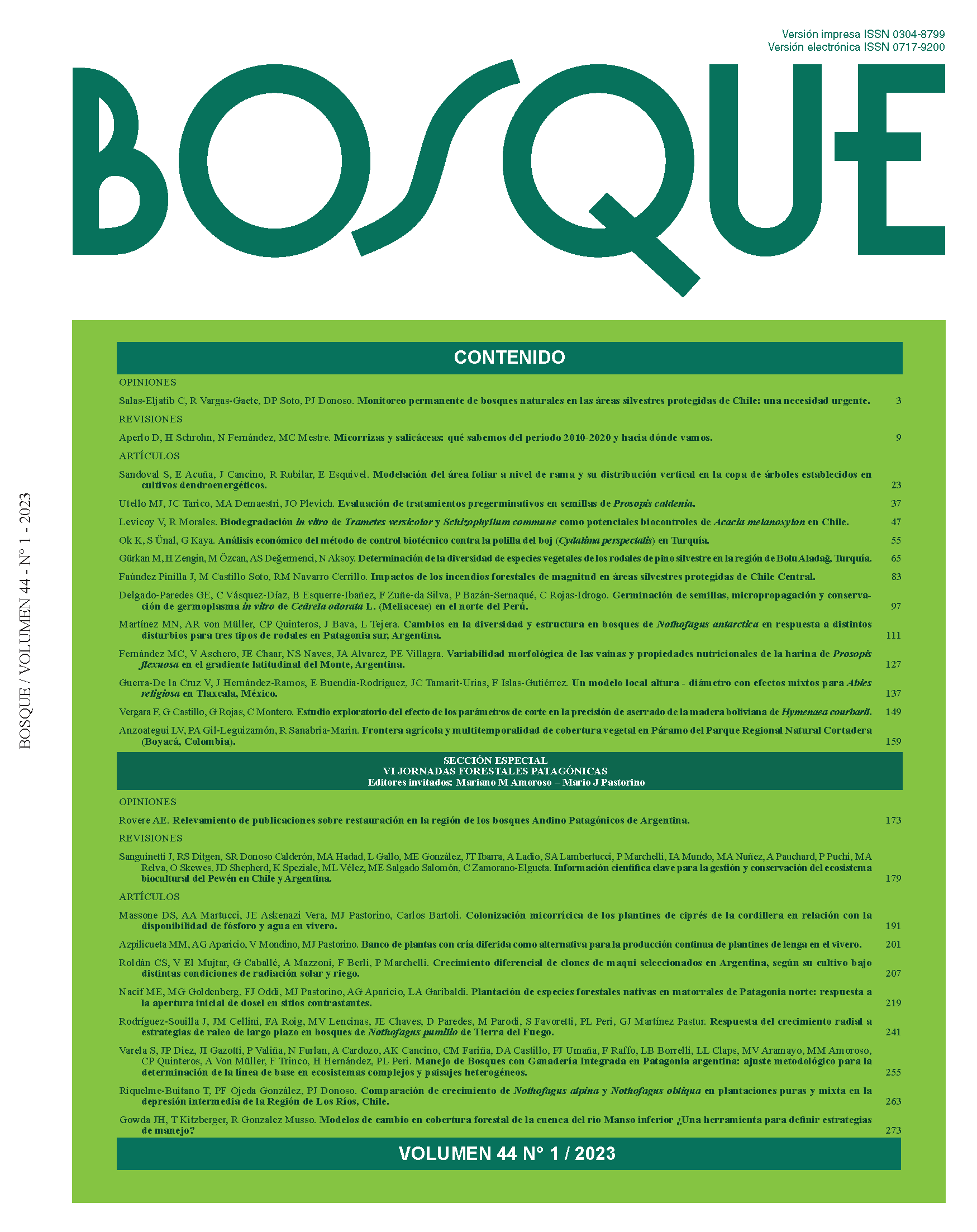Estudio exploratorio del efecto de los parámetros de corte en la precisión de aserrado de la madera boliviana de Hymenaea courbaril
Contenido principal del artículo
Resumen
El aserrío en la madera de Hymenaea courbaril es complejo debido a su elevada densidad y abrasividad. Estos factores producen un desgaste acelerado de los dientes de la sierra y como consecuencia, un aumento de la variabilidad del corte y los costos del proceso. Se evaluó el efecto de parámetros de corte sobre la desviación del corte en el espesor de la madera aserrada de manera de proponer óptimas condiciones de aserrado. Se realizaron ensayos de aserrío utilizando una sierra de banda con carro porta-trozos, considerando sierras con dos geometrías de dientes, trozos agrupados en 3 rangos de diámetro, y dos velocidades de avance. Los resultados indicaron que la variación de corte expresada como la desviación estándar total del espesor de las piezas no fue mayor a 1,00 mm, cuando el diámetro del trozo fue inferior a 0,79 m y la velocidad del avance inferior a 10 m min-1 para ambas geometrías de sierra. El diámetro del trozo y la velocidad de avance afectaron el espesor de aserrado, mientras que la geometría de la sierra no tuvo un efecto directo. Aunque el objetivo no fue determinar el cambio de productividad, previo a esta investigación, los trozos de los 3 grupos de diámetros se aserraban a velocidades inferiores a 10 m min-1. En consecuencia, en virtud de las desviaciones estándar totales estimadas, se puede sugerir que los trozos del grupo de diámetros 2, podrían ser aserradas a una velocidad un 50 % mayor, sin alterar la precisión de corte, mejorando la productividad del aserradero.

